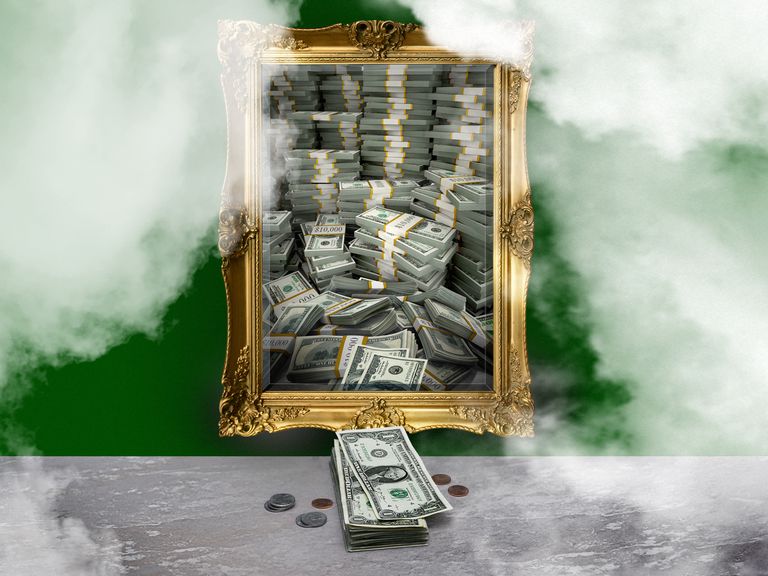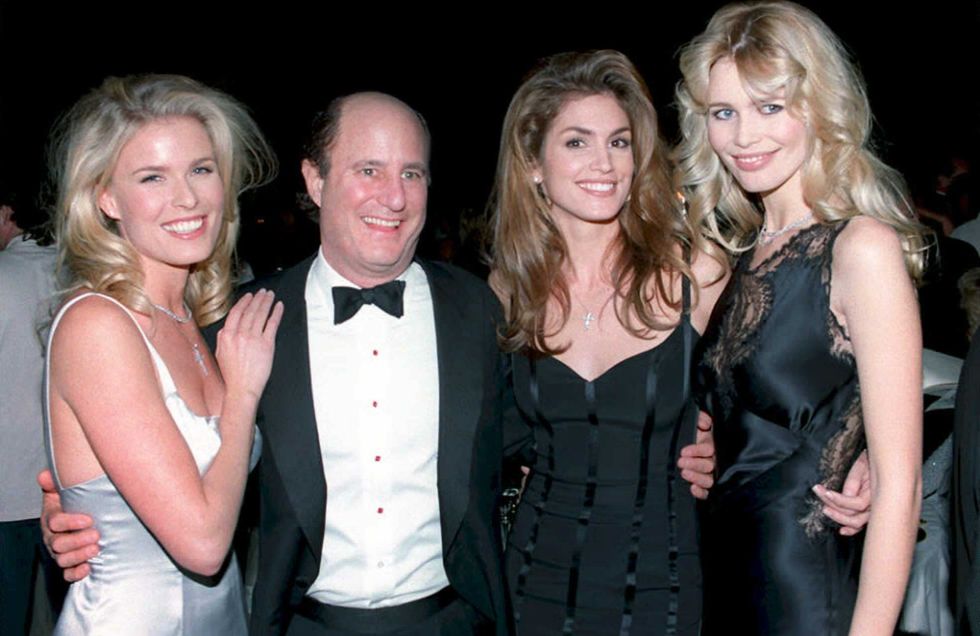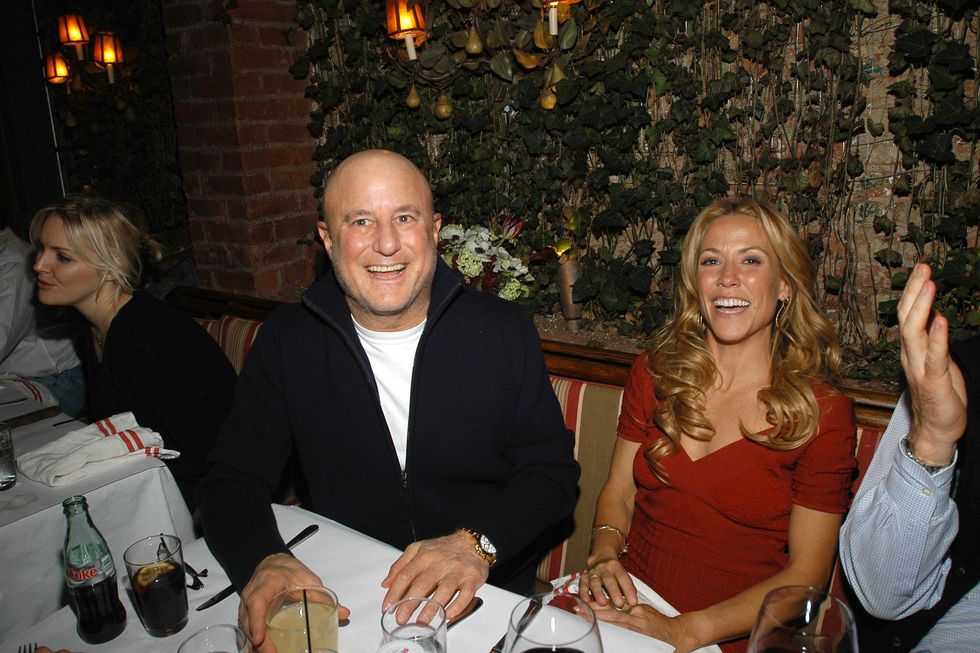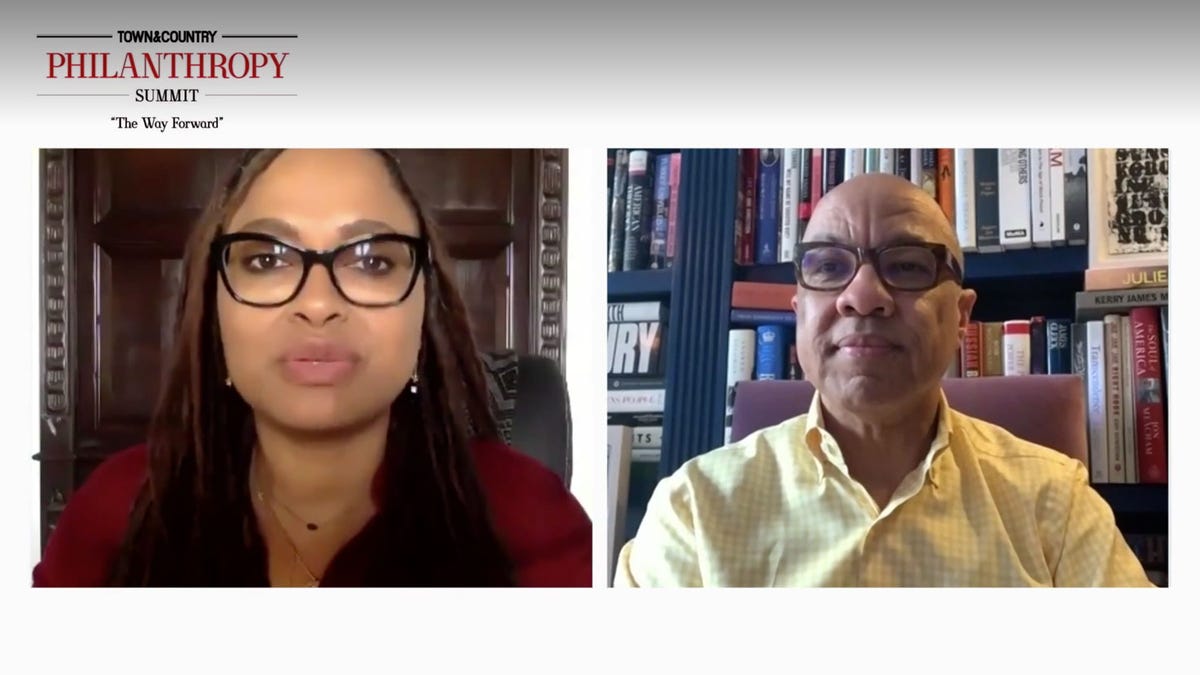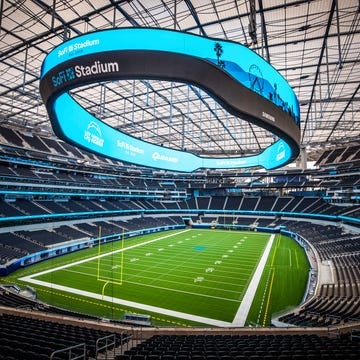In May 1989, four years after he shocked Wall Street by buying the cosmetics company Revlon for $2.7 billion, Ronald Perelman, then 46, was named America’s richest man by Institutional Investor. At the time, Perelman had a net worth estimated at $5 billion, derived from a decade of buying and selling all manner of companies, from a grocery store chain and a group of jewelry stores to a cigar manufacturer and an obscure maker of licorice extract. In achieving this pinnacle of success in American capitalism, Perelman surpassed Sam Walton, the founder of Walmart, who had long occupied the top spot. Perelman, the magazine proclaimed, was a “latter-day Midas.”
In a way it was fitting that Perelman was the country’s richest person at the end of the 1980s, a decade that celebrated greed and glory on Wall Street and in its various practitioners. The ’80s gave us Michael Milken and the junk bond, Lew Ranieri and the securitization of car loan, mortgage, and credit card receivables, and a murderer’s row, including Carl Icahn, Asher Edelman, and Saul Steinberg, of newly dubbed “corporate raiders.” Towering above them all was Perelman, an unlikely-looking titan who shaved his head before it was fashionable and wore tight dress shirts before they were fashionable too, but who nonetheless had all the trappings of modern moguldom.
Perelman’s financial weapon of choice was also an ’80s phenomenon. The leveraged buyout, or LBO, is an acquisition strategy in which an individual or small group puts up a little of their own money and then borrows a lot more from banks and other institutional investors and uses it to buy companies they otherwise would be unlikely to be able to afford. If the buyers analyze the opportunity properly, or get lucky, they can use the company’s cash flow to pay down the borrowed debt, making their initial investment of equity much more valuable. That’s how Perelman got Revlon, as well as many other companies, and it remains a tried-and-true tactic for generating great wealth.
Perelman has been plying his trade since the late 1970s, when he left his hometown of Philadelphia to get out from under the yoke of his late father, Raymond. The elder Perelman, a financial pioneer and devoted philanthropist in his own right, had bought Belmont Iron Works in 1960 and wheeled and dealed his way to a large fortune. Ronald began attending Belmont board meetings when he was an adolescent, and by the time he was in graduate school at Wharton he worked there full-time. “My first job was the night foreman of the galvanizing factory, which was a terrible, terrible job,” he once said.
He soon became his father’s righthand man, but he was frustrated by what he perceived as a lack of career advancement. At the age of 35 he quit and moved to New York City. He borrowed $1.9 million and bought a minority stake in a jeweler, Cohen-Hatfield Industries, and then sold it to Sam Walton, who made it Walmart’s in-house jewelry offering. Perelman pocketed $15 million and was off to the races. He repeated the process with other well-known brands, including Coleman, Marvel Studios, Sunbeam, and Panavision. He assembled a string of local television stations into a company and sold it to Rupert Murdoch, who used it to form the Fox Television Network. Perelman also made a fortune buying and selling failed thrifts during and after the savings and loan crisis of the 1980s. He was not an operator of businesses—that may well be one of his biggest flaws—but he had a particular genius for reading a company’s financial statements and seeing opportunities others had missed.
Perelman reveled in his wealth. There were megayachts and private jets, glamorous and accomplished wives and litigious exes, a massive palazzo on East 62nd Street in Manhattan that served as his office and as a showcase for his much admired modern art collection. The office was connected by a secret tunnel to his home, an opulent townhouse on 63rd Street. Along with his famed 56-acre property in the Hamptons, “the Creeks,” there was another similarly gargantuan spread down the road. For the longest time, no one oozed more money and power on Wall Street than Perelman. (I’ve been fascinated by him since I worked as an M&A banker at Merrill Lynch in the ’90s and made pilgrimages with my old boss, Jack Levy, to the palazzo to chat with Perelman and his entourage about deals.)
As recently as 2018 Bloomberg pegged Perelman’s net worth at around $20 billion. But then something happened. Only a year later that fortune had shrunk to around $7.4 billion, and Perelman began a veritable fire sale of financial and personal assets. These days, getting on the Bloomberg Billionaires Index of the 500 wealthiest individuals requires a net worth of around $5 billion. Perelman no longer qualifies. Forbes’s list of “real-time billionaires” puts his net worth at $2.7 billion: 1,102nd among the world’s 2,668 billionaires.
If Perelman’s acumen and bravado defined an earlier era, the ongoing liquidation of his holdings and personal treasures appears to be flagging a new moment, one in which great fortunes disappear seemingly into thin air. In this unfortunate category, Perelman has the company of the likes of Phil Falcone, the onetime high-flying hedge fund manager; Mohamed Hadid, the Los Angeles real estate developer (and father of Bella and Gigi); and a growing number of crypto magnates. That’s not to say there aren’t still plenty of moguls whose wealth continues to hold steady. But given the recent market volatility, a broader trend may be taking hold.
To understand Perelman’s predicament, it’s worth looking at one of his professional peers, Stephen Schwarzman, who has a net worth estimated at around $30 billion. Unlike Perelman, Schwarzman still has all his trophies, including a triplex at 740 Park Avenue, an oceanfront mansion in Palm Beach, a new home on Nantucket…the list goes on. Part of the reason Schwarzman’s wealth has held up relatively well during the downturn comes down to—believe it or not—structure.
Schwarzman is the co-founder and CEO of the Blackstone Group, a publicly traded firm with assets under management of more than $800 billion. It invests in leveraged buyouts, distressed securities, infrastructure, real estate, and hedge funds, among other things. There are limited partners, non-Blackstone shareholders, and a board of directors. Schwarzman has a designated heir apparent, Jonathan Gray, and a bunch of other partners who aren’t afraid to voice their opinions. In other words, there are serious checks and balances on what Schwarzman can do.
Perelman’s operation has none of those things. He never raised a fund of outsiders’ money and has no limited partners who might question his decisions. Pretty much all the equity he has invested over the decades has been his own. And since he’s not a fiduciary for anyone but himself, he doesn’t have to listen to anybody else and generally doesn’t. (In this, Perelman’s operations resemble more closely those of Donald Trump, who once ran the Trump Organization based on his own gut instincts.)
Going it alone worked beautifully for Perelman for years, but forgoing outside equity investors meant that he had to rely heavily on debt to fund his acquisitions and to make changes to his portfolio. (The New York Times dubbed him “the debt king” earlier this year.) That’s important to note now that he seems to be either losing or selling nearly everything he ever owned. It is not happening just by accident, or because, as he once put it in a statement to me, he was “reset[ting] my priorities” because he wanted a “simpler life.” It’s happening because of the long established structure of his empire. And because of his old paramour: borrowed money.
Most major dealmakers house their collection of equity stakes (and other assets) under the umbrella of a holding company, either one that is publicly traded, like Schwarzman’s Blackstone Group or Henry Kravis’s KKR, or one that is privately held, such as Perelman’s MacAndrews & Forbes. Very little is known about MacAndrews & Forbes, and Perelman likes to keep it that way. (He declined repeated requests to be interviewed.) According to its website, there are now only four companies in its portfolio, and three of them aren’t in particularly great financial condition.
What’s more, according to interviews with a variety of Wall Street bankers and former Perelman employees, MacAndrews & Forbes has borrowed a considerable sum from a group of large banks. This is not particularly unusual, especially with a private holding company. But if, hypothetically, those creditors were to put the squeeze on MacAndrews & Forbes for repayment of the loans because protective covenants in the debt agreements (an early warning system for the banks in case of potential financial distress) had been tripped, it would certainly present a set of challenges for Perelman, especially if the holding company debt is secured by personal assets.
On June 15 Perelman’s beloved Revlon filed for bankruptcy protection in the Southern District of New York. He had nurtured Revlon for 37 years, basking at times in its perceived glamour and at other moments saving it from financial ruin by injecting much needed capital. In 2018 he installed his daughter Debra as the CEO, and she was at the helm when Revlon filed for bankruptcy with some $4.5 billion in debt and other liabilities. Perelman still owned 87 percent of the company, a stake that was worth around $100 million on the day of the announcement. (Revlon’s equity value shot up in the days after the filing, due to takeover rumors.) Some former Perelman employees wonder why he didn’t sell part of his Revlon equity when he had the chance. “He could have easily maintained control of the company by owning 51 percent,” one former adviser told me. “And that extra 36 percent would have netted him hundreds of millions of dollars had he decided to sell down.” But he didn’t. Now, unless a minor miracle occurs, Perelman’s equity in Revlon will be wiped out during the bankruptcy proceedings.
It’s possible that Perelman will end up with nothing for his equity in Vericast, too. This is the strange company he patched together by combining the old Harlan-Clarke check printing business and Valassis, a company that made advertising inserts that show up in Sunday newspapers. It remains a challenged business, but it offers something quite valuable to Perelman. According to former employees, cash flow from Vericast (which he owns outright) can be sent directly to MacAndrews & Forbes to help pay down the holding company’s various obligations and for other purposes.
But that perquisite may soon be ending. On May 16 Chatham Asset Management sent a letter to John O’Malley, the Vericast CEO, offering to buy Vericast for $2.85 billion, the amount of its indebtedness. Normally, a company could choose to ignore such an unsolicited “credit bid,” especially one that offers nothing for the company’s equity. But this is an offer that neither Perelman nor O’Malley can afford to ignore, since Chatham is by far Vericast’s largest creditor. The options are limited: sell and lose the equity, or choose not to play ball and likely face bankruptcy. In either case, there goes a vital source of cash and control of another of Perelman’s portfolio companies.
What about VTV Therapeutics and SIGA, the remaining two companies? Perelman owns 85 percent of VTV, which has a total market value of roughly $60 million, down about 70 percent in the last year. If Perelman could sell the company, he might be able to eke out his $50 million or so stake in cash, or in the stock of an acquiring company. But if he were to try to sell that stake in the market, the stock would collapse further—a function of supply and demand—and he’d be unlikely to get that much for it.
The prospects are better for SIGA, especially lately: It’s a pharmaceutical company specializing in antiviral treatments, and it seems to have benefited from concern about monkeypox. In May and June SIGA’s stock jumped 80 percent, increasing its market value to around $1 billion. Perelman’s 33.4 percent stake in SIGA is worth around $330 million. That’s real money, if he can figure out a way to get at it. Again, he’d have a hard time selling his stake in the market without driving down the stock price.
There isn’t much else left to be sold. Other companies that Perelman used to own or control through MacAndrews & Forbes are long gone, including AM General, the maker of the Humvee; Deluxe Entertainment, a postproduction film services company; Merisant, a manufacturer of noncaloric sweeteners; and Scientific Games, a leading purveyor of lottery games and sports betting tools.
Perelman has divested many of his personal assets as well. He parted with around $350 million worth of his world class contemporary art collection, including Grande Femme 1, a 1960 sculpture by Alberto Giacometti that Sotheby’s sold privately in a sealed bid auction with a starting price of $90 million. In January Perelman sold his second, mostly unused, house on Lily Pond Lane in East Hampton for $84 million. He is said to be “shopping” the Creeks for $180 million. His townhouse in Manhattan has also been listed for sale, at $60 million. He sold two private jets and has put up for sale his 281-foot megayacht, dubbed C2 (after his second wife, Claudia Cohen).
Then there is the curious saga of the real estate on East 62nd Street. He owned three adjacent buildings there, one of which serves as the headquarters of MacAndrews & Forbes. The combined debt on them was $193 million, owed to Citigroup. In 2021 Citigroup hired Cushman & Wakefield, the real estate firm, to sell the debt, and in April the family office of billionaire Tony James bought the loans on the buildings for $115 million, a 40 percent discount. Also in April the Chapman Group, a real estate company owned by Perelman’s father-in-law, bought two of the buildings for a combined $35 million. A 15 percent stake on the third, and largest, building was also sold in April, for $60 million. Then in May the Chapman Group put its two buildings up for sale for $160 million. While it’s not clear how this deal will shake out for the Chapmans, it seems likely Tony James will be the big winner. (James declined to comment.) In the meantime, Perelman was relieved of debt to Citigroup and pocketed $35 million from his father-in-law.
There has been a lot of speculation on Wall Street and by financial observers about what precipitated Perelman’s selling. “When I first noticed he was selling the mansions and yachts, I thought that either he had just been advised he had limited time left to live, and/or his Revlon ATM card was no longer working,” said Mark Cohen, an adjunct professor and director of retail studies at Columbia Business School.
It’s easy to feel schadenfreude when a billionaire has to part with a yacht or a plane, but there can be more serious consequences from the downsizing of an empire. During Perelman’s years of plenty, he gained a well-deserved reputation as an ardent philanthropist. He established the Ronald O. Perelman Department of Dermatology at New York University Langone Medical Center in 1991; the Ronald O. Perelman and Claudia Cohen Center for Reproductive Medicine at Weill Cornell Medical Center in 2008; and the Ronald O. Perelman Heart Institute at New York Presbyterian Hospital in 2009. He created, for $25 million, the Perelman Center for Political Science and Economics at the University of Pennsylvania in 2013. In June 2016 he announced a $75 million gift for the 90,000-square-foot Perelman Center for the Performing Arts near the World Trade Center.
Yet some of his other philanthropic efforts have gone awry. In December 2018 Perelman’s family foundation pledged $65 million to Princeton University (Debra Perelman is a 1996 graduate) for a new residential college at the university. But in 2021 Princeton announced that the residential college—Princeton’s seventh—would no longer be named for Perelman because the foundation failed to make the gifts as promised. According to the latest Form 990 filed for the foundation, it has “approved for future payment” a $25 million donation to Brown University for a new performing arts center, set to open in 2023, but without the Perelman name, since it has yet to make the payment as pledged.
His $100 million pledge in 2013 to help pay for the cost of one of two new buildings for Columbia Business School’s new campus was “redirected,” according to the school, toward creating a new Perelman Scholarship Fund. In the meantime David Geffen, the music mogul, replaced Perelman as the building’s benefactor. “We don’t see this kind of thing happen very often,” said Maria DiMento, a senior reporter at the Chronicle of Philanthropy. “It’s embarrassing for the donor and the institutions. And it can have a negative domino effect.”
The foundation has reduced its giving over the years. It donated $11.75 million in 2015, nearly $10 million in the two subsequent years, but only around $3 million in 2019, the latest year for which information is available.
Aside from the perils of debt and hubris, is there a cautionary tale to be gleaned from Perelman’s slide from feared corporate raider to milquetoast serial liquidator? One former colleague likens Perelman’s saga to the story of Wall Street over the last 40 years. “You have go-go times and crazy vast amounts of wealth being made, and then the consequences of not having the discipline to push yourself away from the buffet counter,” he said. “You see it over and over. This is a man who could have ridden off into the sunset by doing what he ultimately did anyway, selling it all, but in an orderly and rational fashion. But guys like Ronald, they just can’t let go.”
This story appears in the September 2022 issue of Town & Country. SUBSCRIBE NOW

William D. Cohan, a former senior Wall Street M&A investment banker for 17 years, is the New York Times bestselling author of three non-fiction narratives about Wall Street: Money and Power: How Goldman Sachs Came to Rule the World; House of Cards: A Tale of Hubris and Wretched Excess on Wall Street; and, The Last Tycoons: The Secret History of Lazard Frères & Co.
